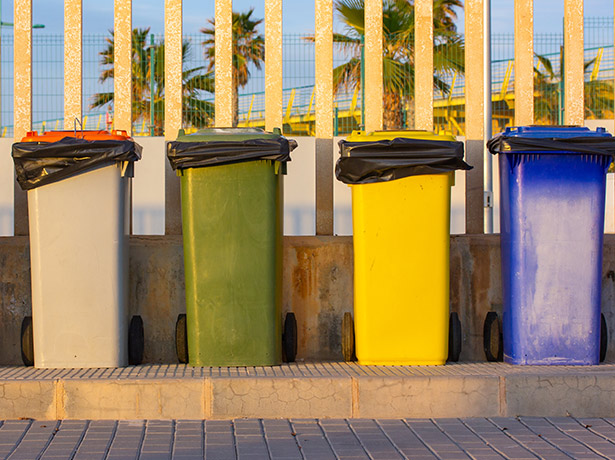Individuals, households, and industries all produce waste on a daily basis. How we manage these waste streams directly influences their impacts – to humans, animals, and our environment.
The building industry traditionally generates an immense amount of waste. The discarding of excess or unused materials during construction can include concrete, masonry, wood, metals, plastics, glass, gypsum, roofing materials, insulation, along with many other high-volume materials. Now add on top of that the waste generated from the manufacturing of these construction materials. When looking at the waste produced throughout a product’s entire life cycle, it’s clear the snowball effect that the building material industry faces. Minimizing this construction material waste from production to disposal is crucial for any sustainability goals. Efforts to reduce waste should be concentrated around designing efficiently to reduce excess materials, strategic material selection, reuse and recycling opportunities, and good disposal methodologies that minimize environmental impacts.
Let’s talk through a few concepts that can help us understand what waste is and isn’t; how it could and should be dealt with; and finally, explain the end goal of circularity.
Hazardous waste
Some waste is classified as hazardous, referring to any type of waste material that poses a substantial threat to human health, the environment, or both. It can come in solid, liquid, or gaseous forms, characterized by its toxicity, flammability, corrosiveness, or reactivity. Because of the potential dangers, there are numerous laws around the world regarding hazardous waste covering its safe handling, transportation, treatment, and disposal both at manufacturing facilities and on building construction sites. How it is dealt with is also determined by the location of the facility or construction site as laws vary around the world. While regulatory compliance must always be the baseline for how to deal with any hazardous waste, many companies go above and beyond, integrating environmentally sensitive practices to prevent contamination and protect the ecosystems around their operations.
Recycled content
Recycled content refers to the parts of materials or products that have been made using recycled materials rather than being created from new, raw materials. It involves the collection, processing, and reprocessing of waste or used materials, such as paper, metals, plastic, glass, or cementitious material to ultimately create new products.
The process of recycling typically involves several steps. First, the waste materials are collected and sorted both to remove contaminants and separate into different types. Then, these materials are processed, converted into a form usable by manufacturers (feedstock), and used as an input in the production of new products.
Recycled content can be found in a wide range of products, including but not limited to building materials, packaging materials, furniture, electronics, and more. Expressed as a “% recycled content”, the percentage indicates the proportion of recycled materials used as an input in its production. It’s important to note, however, that the recycled content of a product can vary based on the calculations used in the building certification program or through the procurement agent. This is where the discussion around post- and pre-consumer recycled content comes into play.
Post-consumer recycled content comes from products that were bought, used, and then recycled by consumers, as the name entails. Common input materials for “post-consumer recycled content” products include things like steel, aluminum cans, paper products, and certain types of plastic.
Pre-consumer recycled content consists of materials that are sent through to be recycled before they are commercially available or used by consumers. This is typically manufacturing scrap that is either reused in the manufacturers own process or sold to other manufacturers for their use.
How to calculate post- and pre-consumer recycled content differs. The most common way to treat the calculation of % is as follows: post-consumer recycled content is treated as the true percentage and pre-consumer content is treated as ½ of the input value. For example, a product that states that it contains “40% recycled content” could be made from 40% virgin material, 20% post-consumer recycled material (expressed in its true value), and 40% pre-consumer recycled material (this only equates to 20% recycled material due to it being pre-consumer in nature and valued at 1/2).
The use of recycled content in the manufacturing process offers several environmental benefits. It conserves natural resources by reducing the extraction of raw materials, decreasing energy consumption, lowers greenhouse gas emissions, and minimizes waste generation. Additionally, it helps promote a circular economy by closing the loop on material usage, extending the lifespan of resources, and reducing the reliance on raw material extraction and landfills.


